Research Reports

Service Utilization & Death Among Individuals with Incarceration Histories
Published:
| Author: Tanya Renn, Christopher Veeh, Stephen Tripodi, Carrie Pettus-Davis, Megan Vogt
Individuals releasing from prison have a higher death rate than the general population. Few studies have explored pre-incarceration service utilization and health among those who die after prison. This paper fills the gap by exploring service usage and health trends among individuals who died and those who survived.
Category:
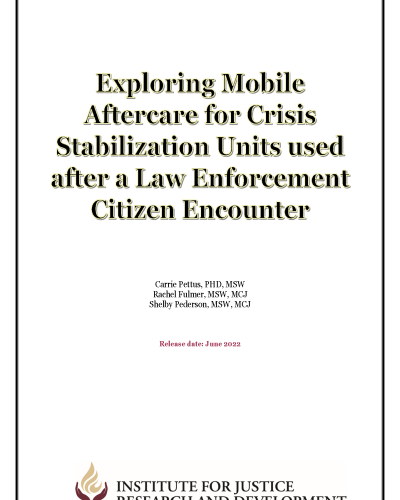
Exploring Mobile Aftercare for Crisis Stabilization Units used after a Law Enforcement Citizen Encounter
Published:
| Author: Carrie Pettus, Rachel Fulmer, Shelby Pederson
As public receiving facilities, CSUs offer a critical non-refusal option for law enforcement, meaning they are obligated to accept individuals brought under an emergency involuntary psychiatric hold. This CSU policy offers an important alternative to arrest for law enforcement, who often encounter individuals experiencing these types of crises. Research indicates that law enforcement often has repeat contact with individuals experiencing mental health and substance-related crises and that a history of interaction with the criminal justice system is common in the typical CSU patient.
Category: Law Enforcement, Reentry
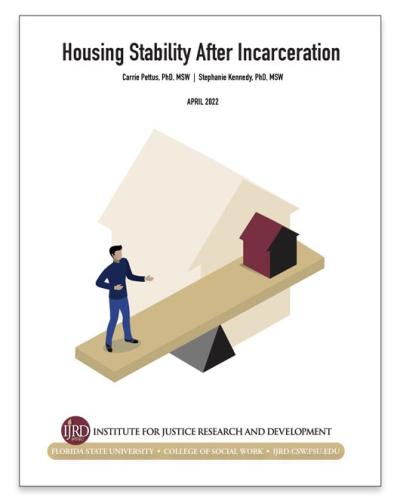
Housing Stability After Incarceration
Published:
| Author: Carrie Pettus, Stephanie Kennedy
This brief report examines changes in where and with whom individuals live, whether they consider themselves to be homeless, and whether they are paying rent or mortgage where they stay between leaving prison to 14-months post-release. These findings are situated within the broader context of reentry support, exploring the impact of both incarceration and reentry on families and the need to focus resources on those most in need.
Category: 5-Key Model for Reentry

Trauma-Based Intervention for Adults Releasing from Jail
Published:
| Author: Stephen Tripodi, Tanya Renn, Carrie Pettus, Elizabeth Curley, Laura Bedard
Learn more about an innovative trauma-based intervention delivered to individuals releasing from a local jail in Florida. This report highlights all aspects of the study, showcases participants' perceptions of participation in trauma-based programming, and presents data on how the intervention affected participants' well-being and behavioral health after completion.
Category: Trauma
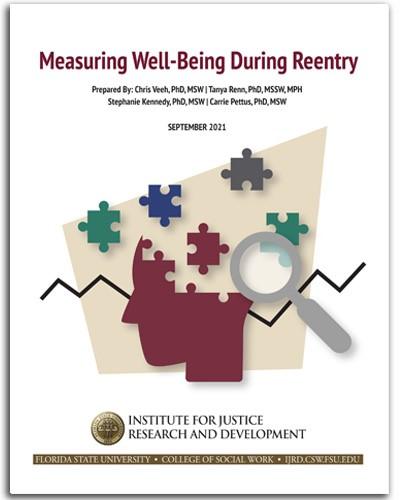
Measuring Well-Being During Reentry
Published:
| Author: Christopher Veeh, Tanya Renn, Stephanie Kennedy, Carrie Pettus
A growing number of scholars and reentry practitioners are seeking alternative approaches to identify how community stability and success can be measured for those returning home from incarceration to our communities. Our team developed a well-being-oriented conceptual framework – the Well-Being Development Model – and a manualized reentry program approach – the 5-Key Model for Reentry – which focus on human potential and thriving. We needed a tool to assess the theoretical validity of our model, the strategies for assigning people to the right supports, and the impact of the 5-Key Model on participant outcomes. The results of the validation study presented in this report confirm that the Reentry Well-Being Assessment Tool is an appropriate means for assessing these three factors.
Category: 5-Key Model for Reentry, Well-Being

Brief Report: COVID-19's Impact on Reentry Research
Published:
| Author: Carrie Pettus, Stephanie Kennedy
When the pandemic began to impact communities across the United States in March 2020, most community members were concerned about how their lives would be affected. Researchers with ongoing studies were also concerned about how the pandemic would affect their ability to assess outcomes in their ongoing research. We anticipated that the pandemic might make it more difficult to detect the impact of the 5-Key Model on well-being outcomes given how drastically everyone in the country’s lives was impacted by the pandemic – and responses to control the pandemic – even those without a history of incarceration. Learn about the results of our analysis in this brief report.
Category: 5-Key Model for Reentry
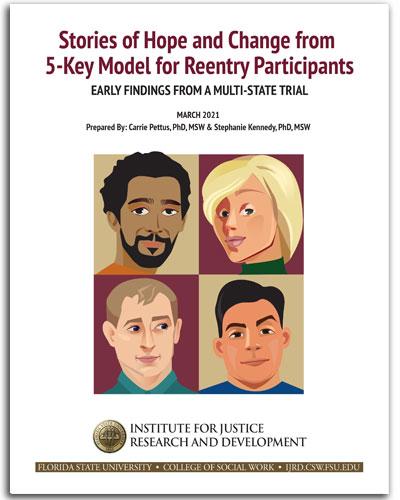
Stories of Hope and Change
Published:
| Author: Carrie Pettus, Stephanie Kennedy
This report presents interviews conducted with four 5-Key Model participants. Participants describe their lives and tell stories about overcoming challenges and finding success. They also describe how the 5 Keys helped them to make significant, positive changes to their lives and the ways 5-Key Model practitioners supported them in making these changes.
Category: 5-Key Model for Reentry
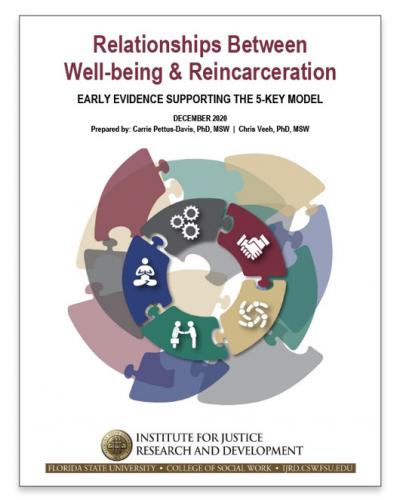
Associations between Well-Being and Reincarceration
Published:
| Author: Carrie Pettus-Davis, Christopher Veeh
Preliminary findings from the 5-Key Model study suggest that participation in 5-Key Model services was associated with reduced reincarceration at 8 and 15 months post-release. Increased overall well-being and increased well-being on each of the 5 Keys were also associated with reduced reincarceration; those receiving the 5-Key Model had higher levels of well-being at 15 months post-release. Although the amount of 5-Key Model program engagement varied, individuals who received more sessions of 5-Key Model programming reported higher levels of employment, overall well-being, and less substance use at 15 months post-release.
Click Here to access the One Page Summary from our Ninth Quarterly Report.
Category: 5-Key Model for Reentry, Well-Being
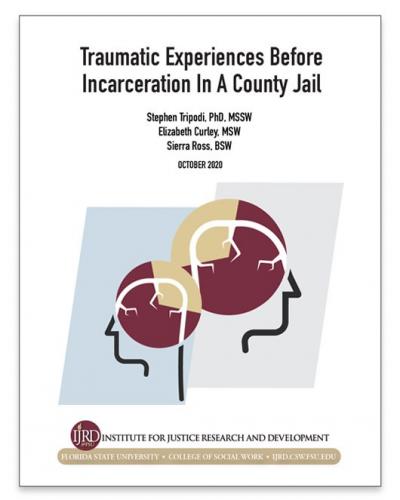
Traumatic experiences before incarceration in a county jail
Published:
| Author: Stephen Tripodi, Elizabeth Curley, Sierra Ross
This report describes the traumatic experiences of individuals prior to their incarceration in a county jail. Nearly 70% of study participants experienced a traumatic event in the year prior to their incarceration, with the majority of those affected reporting more than one traumatic event. Among study participants, 24% were violently assaulted, 15% lost a loved one to homicide, 18% witnessed a serious injury or death, 26% experienced a serious health incident, and 35% received news of the death or injury of a loved one.
Category: Trauma
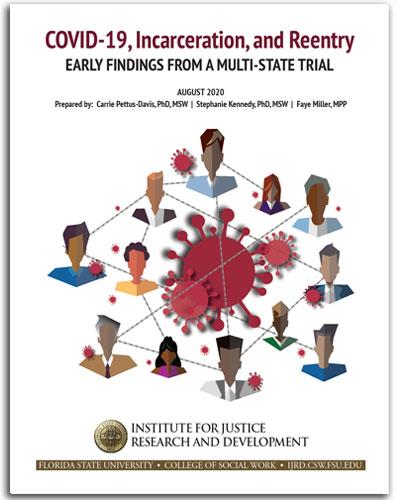
COVID-19, Incarceration, and Reentry
Published:
| Author: Carrie Pettus-Davis, Stephanie Kennedy, Faye Miller
This report presents data on the pandemic-related experiences of incarcerated individuals and individuals recently released from incarceration. Study participants report how they learned about the pandemic while incarcerated and identified the strategies both the facilities they were incarcerated in and they themselves as individuals took to prevent infection. They described stress, anxiety, fear, and worry as they reflected on their incarceration during the pandemic. Some participants were frustrated by a lack of timely, direct communication from the facility about the pandemic and were concerned that they were unable to physically distance from others in the prison. Participants also described the challenges they faced with reentry related to the pandemic.
Click Here to access the One Page Summary from our Eighth Quarterly Report.
Category: 5-Key Model for Reentry, Well-Being, COVID-19

THE OPIOID CRISIS AMONG 5-KEY MODEL STUDY PARTICIPANTS
Published:
| Author: Carrie Pettus-Davis, Shelby Pederson
Learn how opioid use affects individuals in our first four 5-Key Model Phase 1 states - Florida, Kentucky, Pennsylvania, and Texas - as they leave incarceration and return home. Reentry is a high-risk time for those who use opioids and are diagnosed with opioid use disorders. Policy recommendations include infusing the Opioid Use Disorder Continuum of Care into correctional and community-based settings to increase screening, initiation, and retention of affected individuals into prevention or treatment services.
Category: 5-Key Model for Reentry

THE OPIOID CRISIS AMONG INDIVIDUALS WHO HAVE EXPERIENCED INCARCERATION IN Texas
Published:
| Author: Carrie Pettus-Davis, Shelby Pederson
Learn how opioid use affects individuals in Texas as they leave incarceration and return home. The reentry period is a high-risk time for individuals who use opioids and for those diagnosed with an opioid use disorder. Policy recommendations include infusing the Opioid Use Disorder Continuum of Care into both correctional and community-based settings to increase screening, linkage, initiation, and retention of affected individuals into prevention or treatment services.
Category: 5-Key Model for Reentry

THE OPIOID CRISIS AMONG INDIVIDUALS WHO HAVE EXPERIENCED INCARCERATION IN Kentucky
Published:
| Author: Carrie Pettus-Davis, Shelby Pederson
Learn how opioid use affects individuals in Kentucky as they leave incarceration and return home. The reentry period is a high-risk time for individuals who use opioids and for those diagnosed with an opioid use disorder. Policy recommendations include infusing the Opioid Use Disorder Continuum of Care into both correctional and community-based settings to increase screening, linkage, initiation, and retention of affected individuals into prevention or treatment services.
Category: 5-Key Model for Reentry
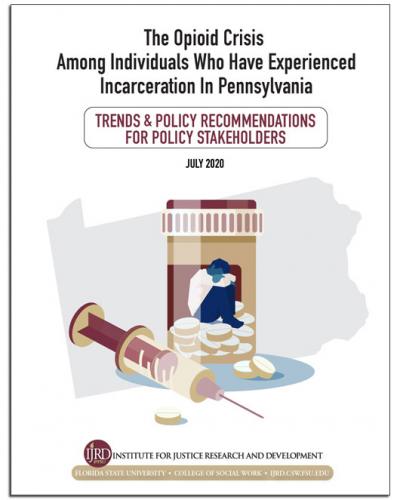
THE OPIOID CRISIS AMONG INDIVIDUALS WHO HAVE EXPERIENCED INCARCERATION IN Pennsylvania
Published:
| Author: Carrie Pettus-Davis, Shelby Pederson
Learn how opioid use affects individuals in Pennsylvania as they leave incarceration and return home. The reentry period is a high-risk time for individuals who use opioids and for those diagnosed with an opioid use disorder. Policy recommendations include infusing the Opioid Use Disorder Continuum of Care into both correctional and community-based settings to increase screening, linkage, initiation, and retention of affected individuals into prevention or treatment services.
Category: 5-Key Model for Reentry
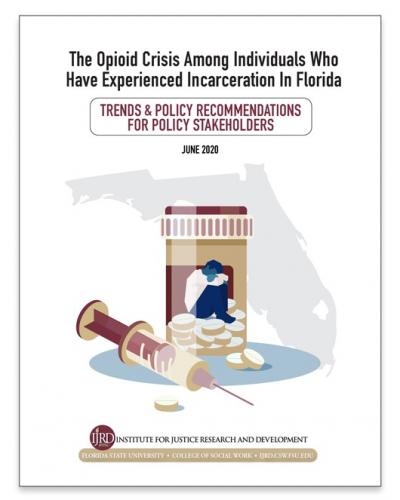
The opioid crisis among individuals who have experienced incarceration in Florida
Published:
| Author: Carrie Pettus-Davis, Shelby Pederson
Learn how opioid use affects individuals in Florida as they leave incarceration and return home. The reentry period is a high-risk time for individuals who use opioids and for those diagnosed with an opioid use disorder. Policy recommendations include infusing the Opioid Use Disorder Continuum of Care into both correctional and community-based settings to increase screening, linkage, initiation, and retention of affected individuals into prevention or treatment services.

